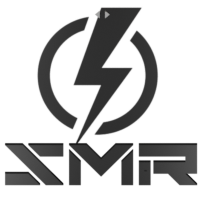30-SECOND SUMMARY
Types of SMRs
Small modular reactors (SMRs) refer to nuclear reactors that are smaller in size and output than conventional nuclear power plants. There are several types of SMRs, including:
- Pressurized Water Reactors (PWRs)
- Small Modular Reactors with Integral Pressurized Water Reactor (iPWR) Technology
- High-Temperature Gas Reactors (HTGRs)
- Molten Salt Reactors (MSRs)
- Liquid Metal-Cooled Reactors (LMRs)
30-SECOND SUMMARY
Designs
Here are ten examples of small modular reactor (SMR) designs:
- NuScale Power Module
- SMR-160
- BWRX-300
- KLT-40S
- CAREM
- ARC-100
- Moltex Stable Salt Reactor
- HTR-PM
- SMART
- Lead-Bismuth Fast Reactor
Types of SMRs
Small modular reactors (SMRs) refer to nuclear reactors that are smaller in size and output than conventional nuclear power plants. There are several types of SMRs, including:
- Pressurized Water Reactors (PWRs): PWRs are similar to those used in large-scale nuclear plants, but they are smaller and modular. They use water as a coolant and a neutron moderator to slow down neutrons and enhance fission.
- Small Modular Reactors with Integral Pressurized Water Reactor (iPWR) Technology: This type of reactor is designed to be self-contained, meaning that all the necessary components are integrated into a single vessel, including the steam generator, reactor coolant pumps, and control system. The iPWRs are considered to be safer than traditional reactors because they have fewer parts and fewer opportunities for accidents to occur.
- High-Temperature Gas Reactors (HTGRs): HTGRs use helium gas as a coolant and graphite as a moderator. They are capable of operating at very high temperatures, which makes them suitable for a variety of applications, including hydrogen production and industrial processes.
- Molten Salt Reactors (MSRs): MSRs use liquid fuel, typically a mixture of fluoride salts containing fissionable materials, as both the fuel and the coolant. They operate at high temperatures and can be used for a range of applications, including electricity generation and hydrogen production.
- Liquid Metal-Cooled Reactors (LMRs): LMRs use liquid metals, such as sodium or lead, as a coolant. They are capable of operating at very high temperatures and can be used for a variety of applications, including electricity generation and nuclear propulsion for ships.
Examples of SMR Designs
Each type of SMR has its own advantages and disadvantages, and the choice of reactor technology depends on various factors, including the intended use, the site characteristics, and the regulatory requirements.
Here are ten examples of small modular reactor (SMR) designs:
- NuScale Power Module: This pressurized water reactor (PWR) design from NuScale Power in the United States is a scalable system that can be deployed in units of up to 12 modules. Each module has a capacity of 60 MW, and the entire system can produce up to 720 MW.
- SMR-160: This PWR design from Holtec International in the United States has a capacity of 160 MW and can be deployed in units of up to six modules. The reactor vessel is submerged in water, which provides an additional safety feature in case of an accident.
- BWRX-300: This boiling water reactor (BWR) design from GE Hitachi Nuclear Energy in the United States has a capacity of 300 MW and can be deployed in units of up to six modules. It uses a simplified, innovative design that reduces the number of components and enhances safety.
- KLT-40S: This PWR design from Rosatom in Russia has a capacity of 35 MW and is primarily used for marine propulsion, although it can also be used for electricity generation. It uses a liquid metal coolant to enhance safety and efficiency.
- CAREM: This PWR design from Argentina has a capacity of 25 MW and is designed to be used in remote locations or areas with limited infrastructure. It has a compact, self-contained design that enhances safety and simplifies construction.
- ARC-100: This sodium-cooled fast reactor (SFR) design from ARC Nuclear in the United States has a capacity of 100 MW and can be deployed in units of up to four modules. It uses a passive safety system that does not require external power or human intervention.
- Moltex Stable Salt Reactor: This molten salt reactor (MSR) design from Moltex Energy in the United Kingdom uses a unique fuel design that makes it resistant to nuclear weapons proliferation. It has a capacity of 300 MW and can be deployed in units of up to six modules.
- HTR-PM: This high-temperature gas-cooled reactor (HTGR) design from China National Nuclear Corporation has a capacity of 200 MW and uses a pebble-bed fuel design that enhances safety and efficiency. It is currently under construction in China.
- SMART: This PWR design from the Korea Atomic Energy Research Institute has a capacity of 330 MW and is designed for use in small grid systems or remote locations. It uses a passive safety system and has a modular, compact design.
- Lead-Bismuth Fast Reactor: This liquid metal-cooled reactor (LMR) design from the Institute of Nuclear Energy Research in Taiwan has a capacity of 10 MW and is primarily used for research and development purposes. It uses a lead-bismuth coolant that enhances safety and efficiency.

